Iconic southern Alberta church could rise from the ashes with original salvaged timber
'I think we can save a lot of these logs,' says Dave Chalmers
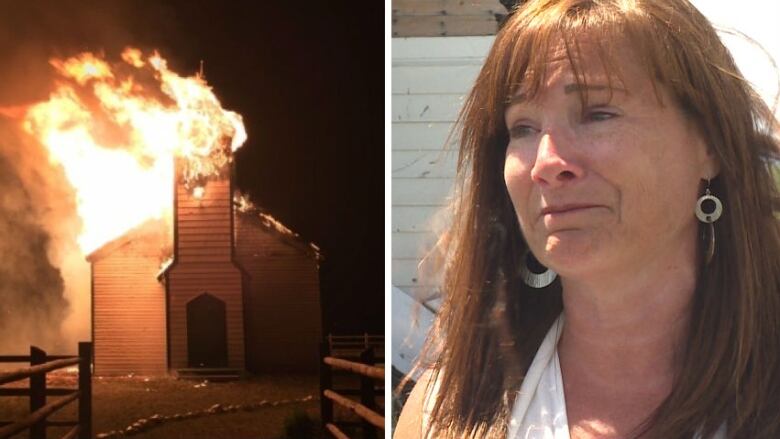
A collapsed roof, piles of splintered wood and four scorched walls are all that remain of one of Brenda McQueen's most cherished childhood places at least for now.
"I think I cried that whole day," she recalls, once again overcome by the very emotions that rocked her when she first heard of the devastating fire that gutted the McDougallStoney Mission Church in May 2017.
"I'm sorry, here I go again," she says, breaking down.
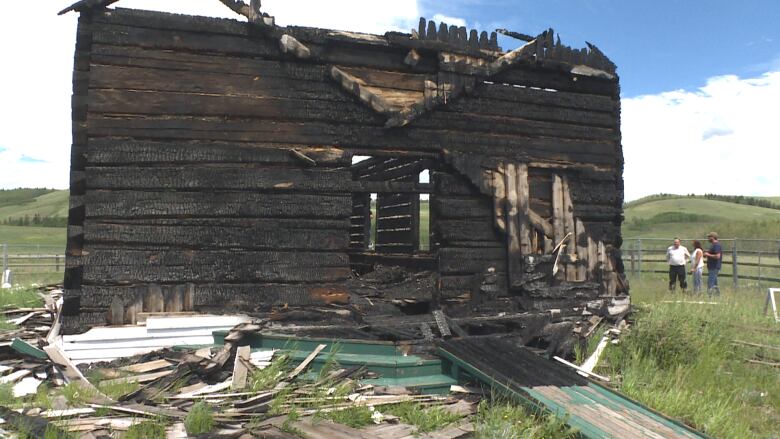
For McQueen, the building evokes warm memories of singing, praying and playing with Stoney Nakoda children, gathering with cousins and grandparents at the twice-yearly services and watching her daughter get married in 2016.
More than 140 years ago, her great, great, great grandfather George McDougallestablished the church.
"It's a connection that gives megoosebumps, actually," she says.
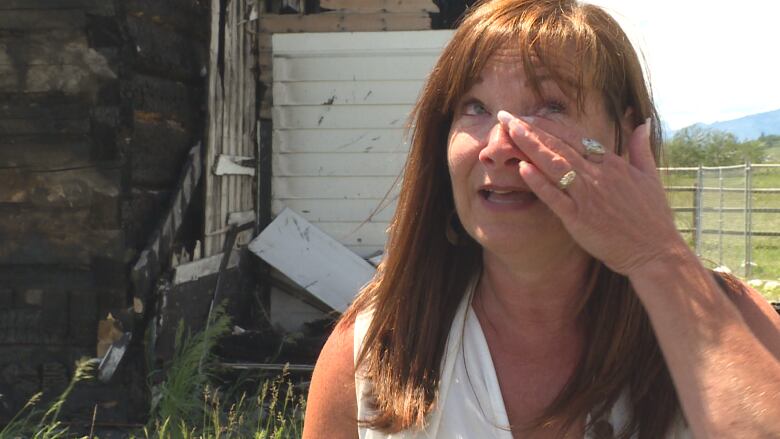
And so McQueenis determined to keep that connection alive.
As president of the McDougall Stoney Mission Society, she'sspearheading a conservation initiative to transform the scorched remainsinto something that once again holds meaning for the community.
That could mean building a memorial to the church on site,establishing a new gathering place or McQueen'spersonal favourite fully restoring the church, exactly as it once stood, using materials salvaged from the wreckage.
"I couldn't just let it stand here as aburntbuilding."
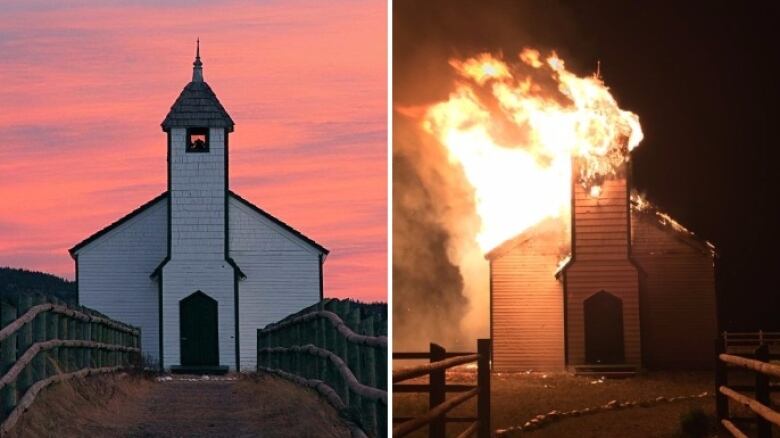
Cultural significance
Over its 143-year history, the churchbecame an icon in the southern Alberta Foothills, both for its striking silhouette against the landscape and its cultural significance.
Built in 1875 in a Carpenter's Gothic style, it was the first Methodist church in southern Alberta, and it has long been a symbol ofMorleyville, the first pioneer settlement in the province.
In recent years, it hadbecome a popular spot for wedding bookings.
Understanding and assessing
The feasibility of rebuilding the church using salvaged material is the question du jour.
The blueprintsexist. In 1985, University of Calgary students undertook a building analysis study and produced precise buildingschematics, down to the size and location of each nail used.
But it's a question of cost and condition of the original building materials, says Dave Chalmers, owner of Chalmers Heritage Conservation.
At first glance,it's hard to see promise in the once-white, now scorched church, he admits. But an unthwartedChalmers says to call him an optimist.
"I think we can save a lot of these logs."
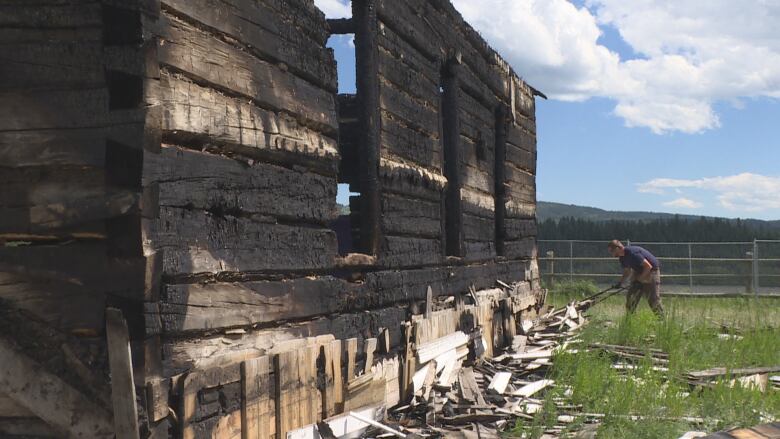
Over the coming months, he and hiscrew willmeticulously disassemble the structure and documenteach blackened log, its condition and position within the building structure, itsdepth of charringand its reusability.
Eventually, this informationwill be used to assess whether a restoration could be done, and if so at what cost.
The process began just last week, but Chalmers is already encouraged.
"As you start to scrape back the charring, we're seeing a lot of sound building material in behind."
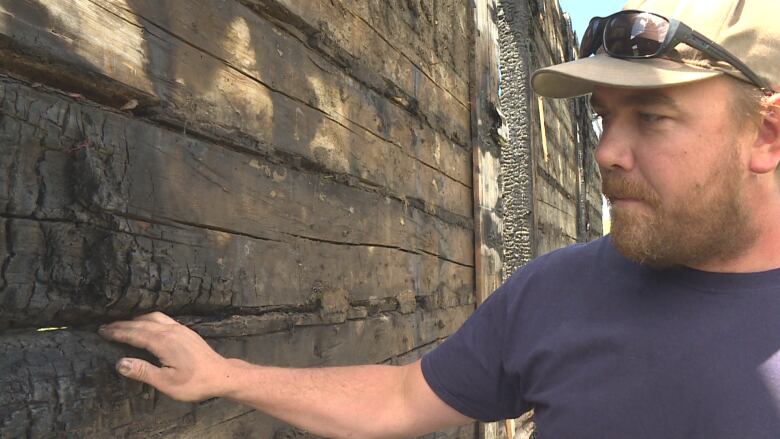
Testament to sheer determination
Chalmers called ita blessingto be able to work on this project.
He relishes the challenge and "tremendous opportunities"of preserving the church's cultural significance as a relationship-builder between pioneer settlers, missionaries and First Nations people.
He's also humbled by the resourcefulness and intensive labour required of the early craftsmen who built it.
The church itself was constructed with massive, 30-inch butt,hand-hewn timber, likely a type of pine, and hand-cut nails.
The chinking and dobbing, or infill material between the logs, isa composition of clay, straw, sand, horsehairand limestone all materials that would have been readily and locally available.
"When they settled here, the entire building was built with whatever's around you," he said.
"It really is a symbol of faith. It's a symbol of the testament to early Albertans and the sheer amount of work that they were willing to go through to settle here."
Still early stages
Once Chalmers' restoration crew is done with their cataloguing and cleaning, the site will be turned over to Lifeways,acompany hired by the provincial government to do an archeological assessment of the area.
"The site's been recognized as a provincial historic resource for a very long time but the area up around the church, archaeologically, isn't very well understood," said Kendra Kolomyja, the archeologiston the project.
The company plans to survey the area and investigate the foundations of the church. Kolomyja said their findings likely won't be materialbut they are hoping to gain an understanding of the site and build a record of it.
"If we can find anything that ties it a little bit more closely to the people themselves, that's always fascinating," she said.
A final decision on what to do with the site likely won't land until the end of the year, and any plans will require provincial sign-off on account of this being a heritage site, says McQueen.
Still, she's filled with hope, excitement and determination.
"We don't want to just let it go.It's part of the history and we should be building on that."
- MORE ALBERTA NEWS | Rural Alberta landowner accused of shooting trespasser still nervous about intruders
- PODCAST |How the legend of Deerfoot rallied Calgary and ruined the man
- Read more articles byCBCCalgary, like us onFacebookfor updates and subscribe to ourCBCCalgarynewsletterfor the day's news at a glance
With files from Dave Gilson













_(720p).jpg)


 OFFICIAL HD MUSIC VIDEO.jpg)
.jpg)



























































































